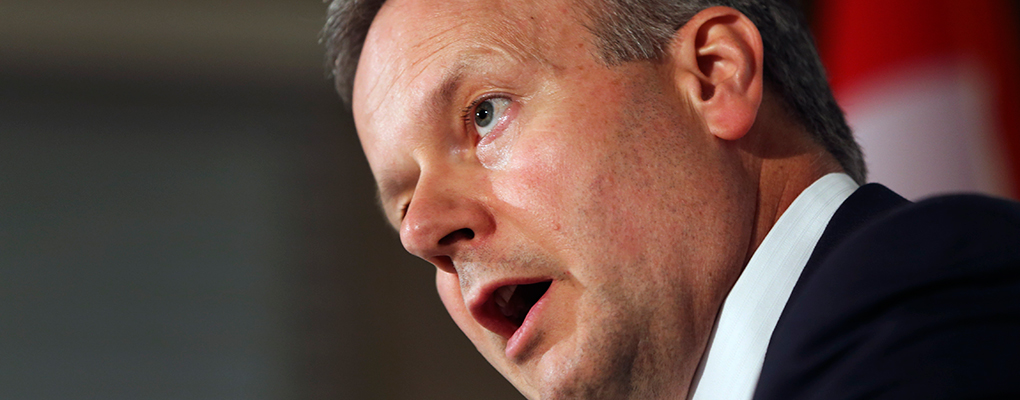
Canada is in sinking mud. Plunging oil prices have hit the country hard, as the commodity is one of its greatest assets.
To counter the pain brought on by falling prices, the Bank of Canada (BoC) took drastic action – cutting its benchmark interest rate from 1 to 0.75 percent. The drop surprised analysts globally: the bank is not known for snap decisions. Many accused its governors of panicking.
The BoC hopes that the rate will give Canada time to breathe; to adjust to the oil slump. They are optimistic that the benefit of introducing the cut will outweigh any short-term market volatility it may cause. In a statement about its decision, the bank wrote: “The oil price shock increases both downside risks to the inflation profile and financial stability risks. The Bank’s policy action is intended to provide insurance against these risks, support the sectoral adjustment needed to strengthen investment and growth, and bring the Canadian economy back to full capacity”.
As the oil slump takes hold, players in Canada’s oil industry are cutting back on investment, but what they need to be doing at this time is spending more on developing the sector’s infrastructure
While a shock to the system, the move spurred a flurry of beneficial activity for Canada’s economy. The Canadian dollar quickly dropped – an encouraging sign for exporters of non-energy goods and services – and the Toronto stock market rose sharply. The rate also pleased Canadian homebuyers. With a housing market the BoC estimates to be overvalued by 30 percent, setting up is no mean feat. Easier loans mean easier homes.
The oil price drop in itself has not been seen as totally alarming. It is predicted that Canadian’s will save $900 per household on fuel costs, freeing up money to spend elsewhere. Business costs will reduce dramatically, making it easier for international and domestic organisations to set up shop, or expand their offerings, in the country.
Still, TD Bank – one of Canada’s largest banks – is concerned for Canada’s future. Responding to the BoC’s rate cut, the institution slashed its 2015 forecast for the country’s economy. It now expects growth to go up by two percent this year, slipping from its December projection of 2.3 percent. A number of analysts have argued that the rate reduction isn’t enough to stimulate Canada’s recovery, and could actually be doing more harm than good.
The Bank of Montreal’s Doug Porter has said that “Far from helping growth, the rate move could actually increase consumer and employer anxiety and uncertainty”. Specifically, he has criticised policy-makers for relying too much on consumer and household spending to facilitate economic growth.
He’s right to bring up the problem of spending. Canadians are already a heavily indebted population and action should be taken to reduce this. Thanks to the rate cut, we can expect citizens to be borrowing even more money – shooting up the ratio of household debt to disposable income, which is already record high.
The other fundamental issue with the cut is that it does not address the turbulence of the oil sector. For years governors have been reliant on this industry to prop Canada’s economy up come rain or shine. And it’s no wonder: with energy accounting for around 10 percent of GDP between the period of 2003-2012, it has been a major part of growth.
Unfortunately they have not had to deal with such a sustained oil price slump before, which shows no signs of improving – and need to carefully consider their strategy to counteract this pain. Numerous suggestions have been made for how to do this, the most pressing of which seems to be diversifying Canada’s oil and gas markets.
As the oil slump takes hold, players in Canada’s oil industry are cutting back on investment, but what they need to be doing at this time is spending more on developing the sector’s infrastructure. This way Canada can expand its new and existing pipelines, to reach out to new markets.
Currently, Canada is highly dependent on America as a consumer of its energy exports, with 99 percent of crude oil and 100 percent of natural gas going to the country. The challenge is that the US is becoming increasingly self-sufficient, especially with the growth of shale markets, leaving Canada less of a strong position to barter on prices.
By enhancing new and existing pipelines Canada has a real chance of tapping into a greater global market, and counterbalancing the oil price declines. A report by the Ivey Energy Policy and Management Centre suggests that Canada would do well to develop business with Asia and Europe. “Continued economic growth in China has fuelled increasing demand for oil imports… Canada’s Pacific coast is relatively close to China, potentially lending an advantage in exports”, write its authors. “An alternative opportunity for the Canadian oil industry is to access European markets, which are heavily dependent on oil imports from Russia”, they add.
It has also been recommended that policy-makers not only look to diversify their markets, but diversify their product range. In particular, Canada’s natural gas market has huge potential, with it currently being the fifth largest producer of the resource. Other countries, such as Russia and Australia, are currently stepping up their natural gas projects. If Canada does the same, it could substantially bolster its balance sheets.
As the BoC’s rate cut shows, policy-makers are aware that Canada’s economy is in difficulty. Reacting to the troubles, government officials have argued that other sectors could hold up Canada’s performance. But with energy so heavily integrated to its economic performance, it would be wrong to steer away from this industry. The key is not to cut back from this sector, but for the government and industry players to have a major rethink of its markets.
This article was edited on February 18. Where it stated energy accounted for 30 percent of GDP in 2013, this has been corrected to 10 percent from around 2003-12


